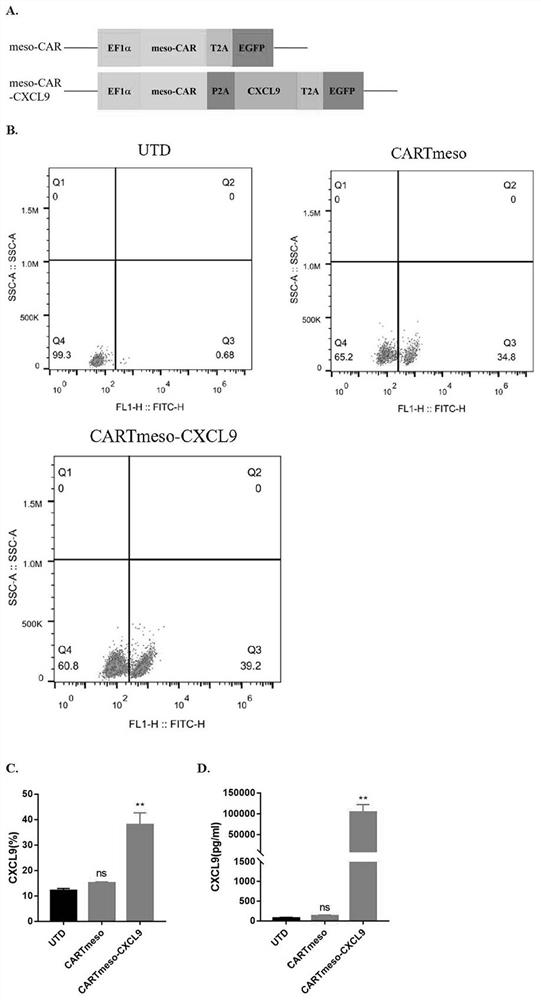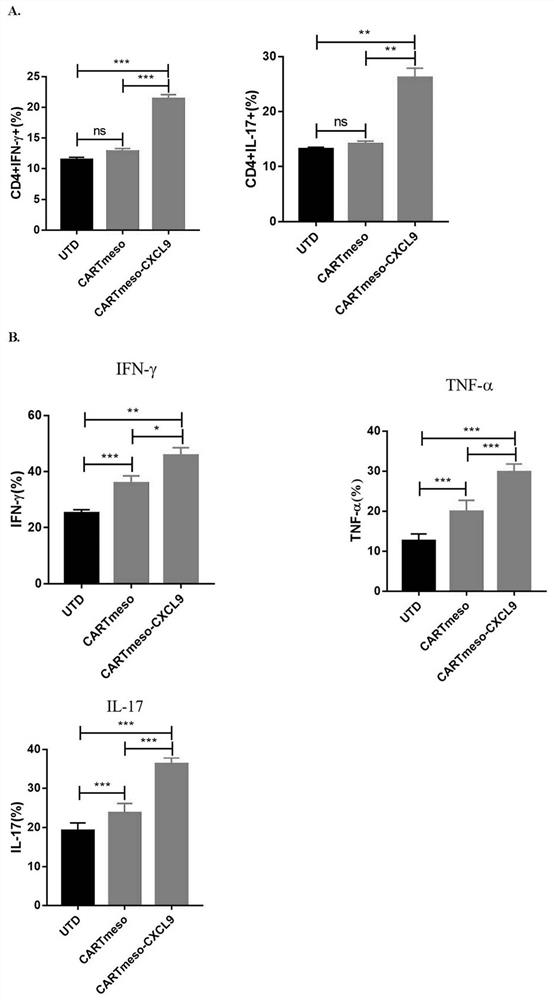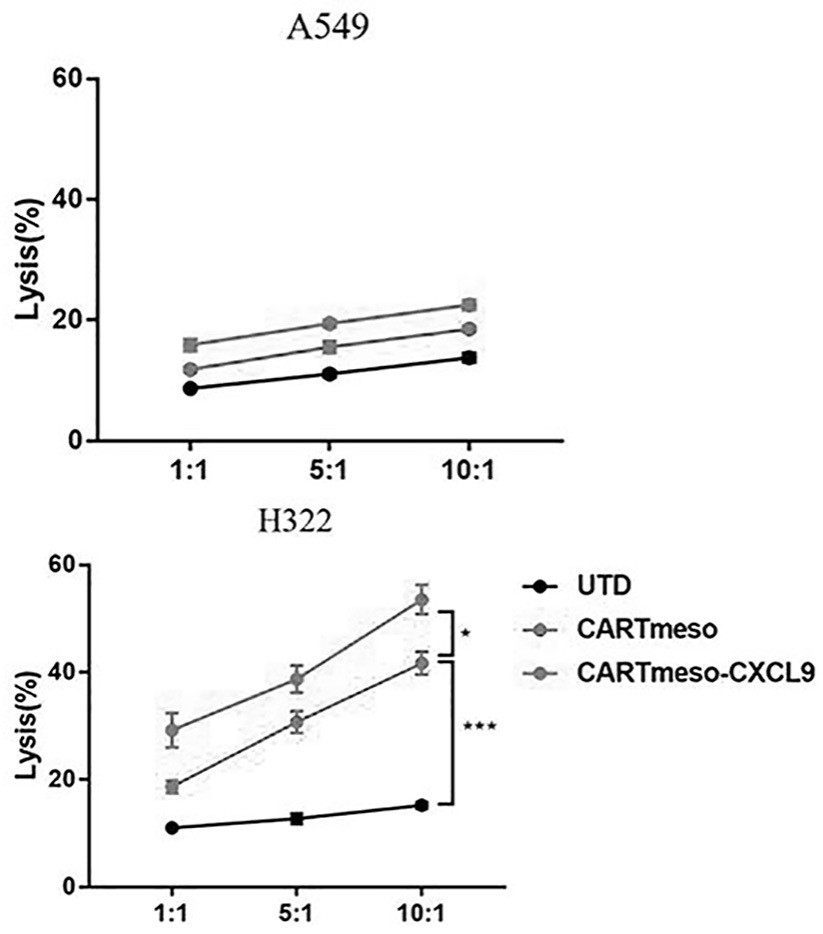CXCL9 modified chimeric antigen receptor T (CAR-T) structure and application thereof
A specific structure, meso-car-cxcl9 technology, applied to medical preparations containing active ingredients, polypeptides containing positioning/targeting motifs, anti-animal/human immunoglobulins, etc., can solve the problem of unseen combination Application and other issues
- Summary
- Abstract
- Description
- Claims
- Application Information
AI Technical Summary
Problems solved by technology
Method used
Image
Examples
Embodiment 1
[0049] This application uses CXCL9 to modify and transform CAR-T cells. Taking a lung cancer model as an example, a chimeric antigen receptor is designed based on the mesothelin target, and CXCL9 is used to modify and transform CAR-T cells. First, a specific CAR structure is designed. Then the T cells are labeled, the specific process is as follows.
[0050] (1) CAR structure design
[0051] Based on the structure of the second-generation CAR, the mesothelin-targeting CAR (meso-CAR) was designed, specifically connected in sequence: human CD8a molecule signal peptide (CD8a), scFv derived from human mesothelin antibody, human CD28 molecule transmembrane region and Intracellular region of CD28 molecule, intracellular region of human CD3z molecule (CD3Zeta), namely: CD8a-meso-CD28-CD3Zeta (CD3ζ);
[0052] That is to say, the CAR (meso-CAR-CXCL9) structure after modification of CXCL9 is: human CD8a molecular signal peptide (CD8a), scFv derived from human mesothelin antibody, human C...
Embodiment 2
[0089] Using the CAR-T cells prepared in Example 1, the inventors further carried out relevant cell experiments and animal experiment analysis, and the relevant experimental items and experimental results are introduced and analyzed as follows.
[0090] (1) Expression analysis of chemokine CXCL9
[0091] First, T cells were collected 5 days after virus infection, and the expression of CXCL9 in the cytoplasm of T cells was detected by flow cytometry.
[0092] The result is as figure 1 As shown in C, it can be seen from the analysis that:
[0093] The expression of CXCL9 in untransduced T cells (UTD) and CARTmeso cells was 10%-16%, while the expression of CXCL9 in CARTmeso-CXCL9 cells reached 30%-50%, indicating that the modified CARTmeso-CXCL9 cells successfully overexpressed CXCL9.
[0094] Subsequently, the secretion level of the T cell chemokine CXCL9 was determined. The specific operation: the supernatants of UTD cells, CARTmeso or CARTmeso-CXCL9 cells were collected resp...
PUM
 Login to View More
Login to View More Abstract
Description
Claims
Application Information
 Login to View More
Login to View More - R&D
- Intellectual Property
- Life Sciences
- Materials
- Tech Scout
- Unparalleled Data Quality
- Higher Quality Content
- 60% Fewer Hallucinations
Browse by: Latest US Patents, China's latest patents, Technical Efficacy Thesaurus, Application Domain, Technology Topic, Popular Technical Reports.
© 2025 PatSnap. All rights reserved.Legal|Privacy policy|Modern Slavery Act Transparency Statement|Sitemap|About US| Contact US: help@patsnap.com



